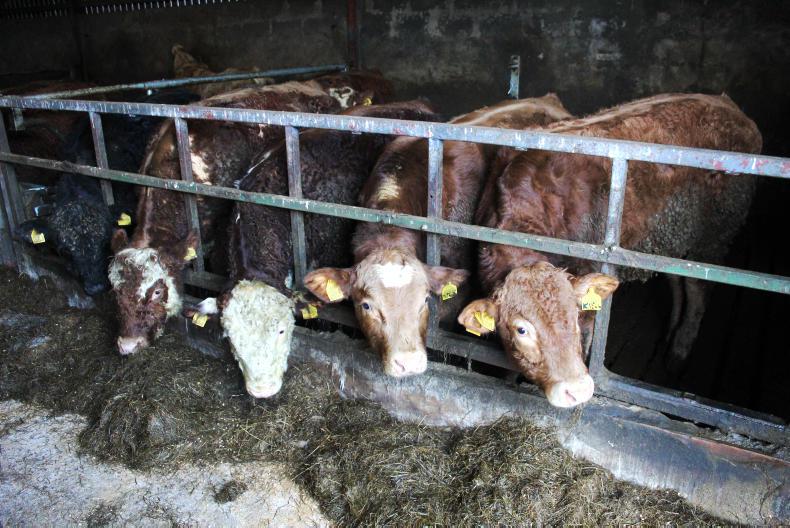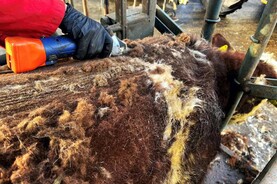As the start of the winter housing period approaches, make sure you have sheds ready and clean for cattle.
Jobs such as washing slats and walls, fixing lights and feed barriers are usually left for a 'rainy day', but it is now time to get any outstanding jobs completed before housing starts.
Powerwash shed walls, slats, feed barriers, ventilated tin and space boarding. Leave sheds to air dry before spreading hydrated lime on surfaces.
Barriers
Make sure feed barriers and dividing gates are securely fixed. Carry out any alterations so that gates open and close freely, as well as being secure once pressure is applied when cattle are feeding.
Where gates need to be altered to increase or decrease feed space, this should also be completed now.
Where metal work has become exposed, apply protective paint to prevent silage effluent causing corrosion.
Lights
Make sure all lights are working. Where necessary, install extra lights internally and externally to provide a safe working environment.
Replacing bulbs with LED lights will reduce energy consumption and provide greater visibility inside sheds.
Ventilation
Carry out a smoke bomb test or set a bag of straw alight in cattle pens and monitor the smoke movement.
In sheds with good ventilation, smoke should rise and quickly exit through the ridge of the roof.
If smoke does not exit the shed and accumulates in corners, then alter airflow by removing or replacing tin and space boarding. You may also need to amend the outlet for air to create a natural draw of fresh air.
Water
Fix any leaks to water troughs and place guard rails, if necessary, to stop cattle from rubbing and scratching against troughs.
Cattle on dry silage or high levels of concentrate will have a high water requirement. Therefore, ensure drinking troughs have adequate flow rates and capacity to satisfy cattle demand.
Smaller troughs activated by nose paddles are ineffective for such cattle and should be replaced with larger troughs.
Read more
Newford Farm update: first batch of calves successfully weaned
Beef management: five steps to manage calves when housing early
As the start of the winter housing period approaches, make sure you have sheds ready and clean for cattle.
Jobs such as washing slats and walls, fixing lights and feed barriers are usually left for a 'rainy day', but it is now time to get any outstanding jobs completed before housing starts.
Powerwash shed walls, slats, feed barriers, ventilated tin and space boarding. Leave sheds to air dry before spreading hydrated lime on surfaces.
Barriers
Make sure feed barriers and dividing gates are securely fixed. Carry out any alterations so that gates open and close freely, as well as being secure once pressure is applied when cattle are feeding.
Where gates need to be altered to increase or decrease feed space, this should also be completed now.
Where metal work has become exposed, apply protective paint to prevent silage effluent causing corrosion.
Lights
Make sure all lights are working. Where necessary, install extra lights internally and externally to provide a safe working environment.
Replacing bulbs with LED lights will reduce energy consumption and provide greater visibility inside sheds.
Ventilation
Carry out a smoke bomb test or set a bag of straw alight in cattle pens and monitor the smoke movement.
In sheds with good ventilation, smoke should rise and quickly exit through the ridge of the roof.
If smoke does not exit the shed and accumulates in corners, then alter airflow by removing or replacing tin and space boarding. You may also need to amend the outlet for air to create a natural draw of fresh air.
Water
Fix any leaks to water troughs and place guard rails, if necessary, to stop cattle from rubbing and scratching against troughs.
Cattle on dry silage or high levels of concentrate will have a high water requirement. Therefore, ensure drinking troughs have adequate flow rates and capacity to satisfy cattle demand.
Smaller troughs activated by nose paddles are ineffective for such cattle and should be replaced with larger troughs.
Read more
Newford Farm update: first batch of calves successfully weaned
Beef management: five steps to manage calves when housing early






 This is a subscriber-only article
This is a subscriber-only article









SHARING OPTIONS: